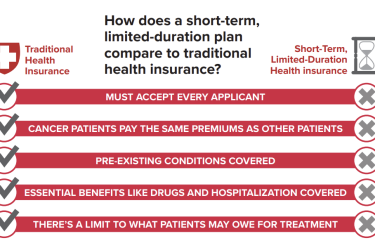
We posted recently about California’s assessment of who was dropping out of the exchange, including the finding that most people leaving Covered California were getting health insurance elsewhere.
But as Abby Goodnough later reported from Yazoo City, Miss., that’s not always the reason for higher turnover in other areas. Retaining enrollees is a challenge – and affordability is one big reason. That’s true even for people whose premiums are heavily subsidized.
Take 50-year-old Stephanie Douglas, a stroke survivor with big bills, who couldn’t pay her $58.17 monthly premium. “When you owe on your house, on your truck, when you’re a single parent of a college student and you have other bills, it just doesn’t work,” she told Goodnough.
Cost isn’t the only reason for dropping out. Last February, 11.7 million people had signed up. But by June, only 9.9 million were being covered in the state and federal exchanges.
Goodnough writes:
“Though there is no comprehensive data on why people drop or lose their marketplace coverage, enrollment counselors, health care providers and consumers say cost is a factor. In some cases, people lost jobs or their income dropped after they enrolled. Other people signed up for coverage only to decide later that they could not afford it.”
But a lot of other people dropped out because they didn’t understand they had to pay every month. Some had changes in their income and didn’t know how to adjust their payments and subsidies. Others say they didn’t know how to respond to questions from the exchange about income verification or immigration status (or even if they were genuinely eligible for the coverage and financial help). Or they were sending in payments based on the 2014 rates, when those had changed slightly in 2015.
In other words – confusion.
As you cover open enrollment this year, ask the navigators and assisters if they are explaining things differently: whether they have learned how to anticipate and pre-empt some of the confusion that can turn the newly insured back into the uninsured. Ask the people waiting for assistance what they know and what they find daunting. Whether they get mail from the government or read their email. Whether it’s in plain English or jargon they don’t understand.
We’ve heard a lot about how people don’t understand how to use insurance – that they don’t understand how to stay in network, or how to avoid the ER, or what a co-pay is, or how to figure out what does and does not count toward the deductible. (Good luck with that one – I can’t figure it out in my own family’s plan!)
But Goodnough’s reporting suggests a whole other layer of health illiteracy – how to simply keep the insurance and any subsidies that people are eligible during the course of a year. Given HHS’s very modest goals for enrollment this coming year – and its assessment about how hard it will be to sign up many more people – greater emphasis on the ABCs of maintaining coverage may be as important as the assistance people received when initially signing up.








